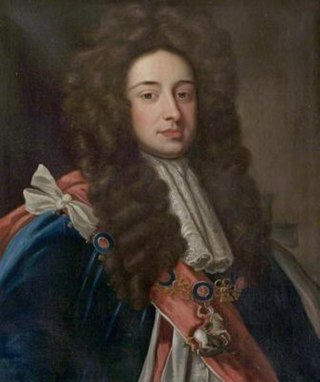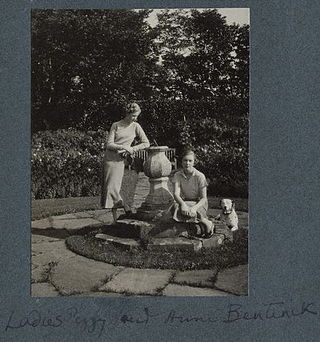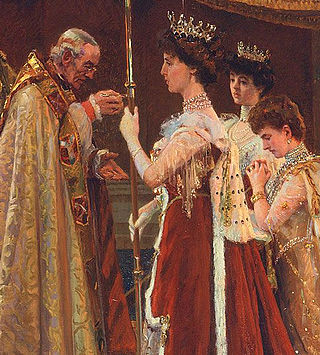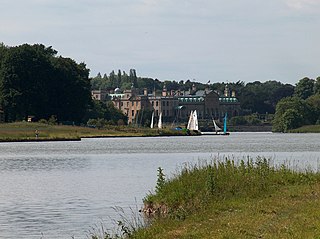
The Harley Gallery and Foundation is an educational charity situated on the ducal estate of Welbeck Abbey in North Nottinghamshire.

The Harley Gallery and Foundation is an educational charity situated on the ducal estate of Welbeck Abbey in North Nottinghamshire.
The Harley Foundation was set up in 1977 by Ivy, Duchess of Portland, "to encourage creativity in all of us". [1] The Harley Foundation works towards this aim through the activities of The Portland Collection, The Harley Gallery and The Harley Foundation Studios. The Harley Foundation is a registered charity and in 2010-11 had a gross income of £11,416,110. [2]
The Gallery works towards the Foundation's objectives through the historical and contemporary exhibition programme, craft shop, events and education activities.
The Harley Gallery was built in 1994, "converted with great aplomb by Leo Godlewski from the old estate gasworks built by the 5th Duke in 1860." [3]
The gas works were built to illuminate the 5th Duke's "New Works" at Welbeck, and were one of his early buildings. These works provided light and heat for the gallops, gardens and "underground drives which lace the Park... lit both by circular, plate glass skylights and gas lamps fed from the Duke's own purpose-built gas works (now the Harley Gallery)." [4] The gas works were in a state of ruin when work began to convert them into the Gallery; however, parts of the original detail and character of the original building were retained - including an original roof truss which is still visible within the building.
The building won a Civic Trust Award for Architecture in 1995. [5]
The three gallery spaces are used to exhibit a wide variety of contemporary and historical art and craft, with exhibitions changing five times a year. Previous fine art exhibitions have included David Hockney, Peter Blake, Euan Uglow and George Stubbs. Craft exhibitions have included Kate Malone, Junko Mori and Hiroshi Suzuki.
The Craft Shop stocks work by over 300 makers.
The Gallery building is situated in courtyard gardens, adjacent to the 5th Duke's extensive kitchen garden. This garden was modelled after "the seventeen acre royal walled gardens in Windsor Great Park. Not to be outdone, the Duke of Portland enclosed twenty two acres". [6] The kitchen garden walls are still present, and Dukeries Garden Centre is situated within the walls. Some of the original Victorian glasshouses can be seen in the garden centre. The car park for The Harley Gallery is located in the area of the Kitchen Garden that was known as "California" - being the warmest, sunniest area.
The courtyard gardens also contain the Welbeck Farm Shop and the Limehouse Cafe. [7] The cafe building was converted from the Lime House, which was used in the production of the gas, which was then stored in large circular gasometers- the circular shapes can still be seen in the courtyard.
The Gallery and Foundation provide an educational programme of events, including workshops for primary school children, lectures on art history, and work with local students. [8]
The Harley Foundation Studios are workspaces close to the Harley Gallery, which are used by a wide variety of artists and craftspeople. Studio artists have included conservators, fine artists, photographers, textile artists, ceramicists, printmakers and sculptors. The studios are open to the public once a year, as part of the Harley Art and Food Market and Open Studios.
Situated inside what was the Welbeck Estate's extensive kitchen gardens built by the 5th Duke of Portland, the Harley Studios have been built within the "Tan Gallop", and on the sites of the cucumber and pineapple pits - the latter - "Pineapple Place" designed by John Outram. [9]
The Harley Foundation provides "craftspeople and artists affordable working space in peaceful surroundings". [10] The Foundation also operates an "incubator space" for new artists, to assist them in setting up their practice, and grant-aid.
The Portland Collection opened in 2016 adjacent to The Harley Gallery. This gallery space shows works from the historical fine and decorative art collection of the Cavendish-Bentinck family, "one of Britain’s largest aristocratic art collections". [11]
The Portland Collection was designed by Hugh Broughton Architects, and was named RIBA East Midlands Building of the Year in 2016. [12]
The new gallery is housed within the walls of the Victorian "Tan Gallop", a redundant structure previously used for training racehorses.
The Portland Collection contains two galleries and a glazed entrance pavilion. The gallery spaces show displays from the Collection, which "offers important works – among them, Michelangelo's The Madonna of Silence, van Dyck's First Earl of Strafford, equestrian studies by George Stubbs, and portraits by John Singer Sargent. And these are supported by glittering ducal valuables and curios, including the Portland Tiara and the pearl earring worn by Charles I at his execution in 1649." [13]
Displays change every three years, with some pieces, such as works on paper and miniature portraits, changing more frequently.
The Portland Tiara was stolen from the Harley Gallery in November 2018. [14]

Worksop is a market town in the Bassetlaw District in Nottinghamshire, England. It is located 15 miles (24 km) south of Doncaster, 15 miles (24 km) south-east of Sheffield and 24 miles (39 km) north of Nottingham. Located close to Nottinghamshire's borders with South Yorkshire and Derbyshire, it is on the River Ryton and not far from the northern edge of Sherwood Forest. Other nearby towns include Chesterfield, Gainsborough, Mansfield and Retford. The population of the town was recorded at 44,733 in the 2021 Census.

William Henry Cavendish Cavendish-Bentinck, 3rd Duke of Portland, was a British Whig and then a Tory politician during the late Georgian era. He served as chancellor of the University of Oxford (1792–1809) and as Prime Minister of Great Britain (1783) and then of the United Kingdom (1807–1809). The gap of 26 years between his two terms as prime minister is the longest of any British prime minister. He was also the fourth great-grandfather of King Charles III through his great-granddaughter Cecilia Bowes-Lyon, Countess of Strathmore and Kinghorne.

William John Cavendish-Scott-Bentinck, 5th Duke of Portland, styled Lord John Bentinck before 1824 and Marquess of Titchfield between 1824 and 1854, was a British Army officer and peer, most remembered for his eccentric behaviour. A recluse who preferred to live in seclusion, he had an elaborate underground maze excavated under his estate at Welbeck Abbey near Clumber Park in North Nottinghamshire.

The Henry Moore Foundation is a registered charity in England, established for education and promotion of the fine arts — in particular, to advance understanding of the works of Henry Moore. The charity was set up with a gift from the artist in 1977. The Foundation supports a wide range of projects, including student bursaries, fellowships for artists and financial grants to various arts institutions. It operates from Perry Green in Hertfordshire and at the Henry Moore Institute in Leeds, England.

John Holles, 1st Duke of Newcastle, KG, PC was a prominent English peer and politician.

Margaret Cavendish Bentinck, Duchess of Portland was the richest woman in Great Britain of her time, styled Lady Margaret Harley before 1734, Duchess of Portland from 1734 to her husband's death in 1761, and Dowager Duchess of Portland from 1761 until her own death in 1785.

Welbeck Abbey is a mansion situated in the village of Welbeck, which is within the civil parish of Norton, Cuckney, Holbeck and Welbeck, in the Bassetlaw District of Nottinghamshire, England. It was the site of a monastery belonging to the Premonstratensian order in England and after the Dissolution of the Monasteries, a country house residence of the Dukes of Portland. It is part of the Dukeries, four contiguous ducal estates in North Nottinghamshire. The house is a Grade I listed building.

Watts Gallery – Artists' Village is an art gallery in the village of Compton, near Guildford in Surrey. It is dedicated to the work of the Victorian-era painter and sculptor George Frederic Watts.

Worksop Manor is a Grade I listed 18th-century country house in Bassetlaw, Nottinghamshire. It stands in one of the four contiguous estates in the Dukeries area of Nottinghamshire. Traditionally, the Lord of the Manor of Worksop may assist a British monarch at his or her coronation by providing a glove and putting it on the monarch's right hand and supporting his or her right arm. Worksop Manor was the seat of the ancient Lords of Worksop.

Edward Harley, 2nd Earl of Oxford and Earl Mortimer was an English Tory politician and peer who sat in the House of Commons of Great Britain from 1711 to 1724.

Lady Alexandra Margaret Anne Cavendish-Bentinck was a member of the British nobility and one of the richest landowners in the country. She was a notable charity worker, art collector, and horsewoman.

Ivy Cavendish-Bentinck, Duchess of Portland GBE was Duchess of Portland from 1943 – 1977 and afterwards Dowager Duchess. She initiated the Harley Foundation, "to encourage creativity".

West Dean College of Arts and Conservation is situated in the 6,350-acre (25.7 km2) West Dean Estate, of West Dean near Chichester. The Estate was formerly the home of the poet and patron of the arts Edward James. He was an avid admirer of the Surrealist movement, and formed one of the largest collections of their works during his lifetime. He inherited West Dean House and the estate after the death of his father, William Dodge James.

Winifred Anna Cavendish-Bentinck, Duchess of Portland was a British humanitarian and animal welfare activist.
William Speechly was a late 18th- and early 19th-century English horticulturist, best known as the head gardener to William Henry Cavendish-Bentinck, 3rd Duke of Portland, and for his skill in growing pineapples and grapes.

St Winifred's Chapel, Holbeck is a Grade II listed parish church and former private chapel in the Church of England in Holbeck, Nottinghamshire, south-west of Worksop. Holbeck is an estate village built for the Dukes of Portland at Welbeck Abbey.
Hugh Giles Keyworth Broughton is an English architect and one of the world's leading designers of polar research facilities. His practice, Hugh Broughton Architects, was founded in 1995 and is based in London, works internationally. The practice has won several high profile international design competitions, including Halley VI Research Station, Juan Carlos 1 Spanish Antarctic Base, the Atmospheric Watch Observatory in Greenland for the US National Science Foundation and a new health facility on Tristan da Cunha, the world's most remote inhabited island. As of 2020, current polar work includes the redevelopment of Scott Base for Antarctica New Zealand, designed in collaboration with Jasmax; and the modernisation of the Rothera Research Station for the British Antarctic Survey (2023). In 2019 the practice completed the conservation of the Grade I listed Painted Hall in the Old Royal Naval College, Greenwich, designed by Sir Christopher Wren in 1696.

The Portland Tiara was a diamond-encrusted gold and silver tiara made by Cartier for Winifred, Duchess of Portland to wear at the coronation of Edward VII and Queen Alexandra in 1902. It was exhibited at the Harley Gallery and Foundation's Portland Collection from 2016 until it was stolen and broken up in November 2018. The tiara was estimated to be worth £3.75 million.

Clumber and Hardwick is a civil parish in the Bassetlaw district, in the county of Nottinghamshire, England. The parish includes the settlement of Hardwick Village and Clumber Park, a country park. In the UK census of 2021 the parish had a population of 66. The parish lies in the north west of the county, and south west within the district. It is 125 miles north west of London, 22 miles north of the city of Nottingham, and 3½ miles south east of the market town of Worksop.The parish touches Babworth, Carburton, Elkesley, Perlethorpe cum Budby and Welbeck. The parish was formed on 1 April 1994. The area is within Sherwood Forest and has close historical associations with the Dukes of Newcastle, being part of a wider region known as The Dukeries. There are 26 listed buildings in Clumber and Hardwick.

Norton, Cuckney, Holbeck and Welbeck is a civil parish in the Bassetlaw district of Nottinghamshire, England.